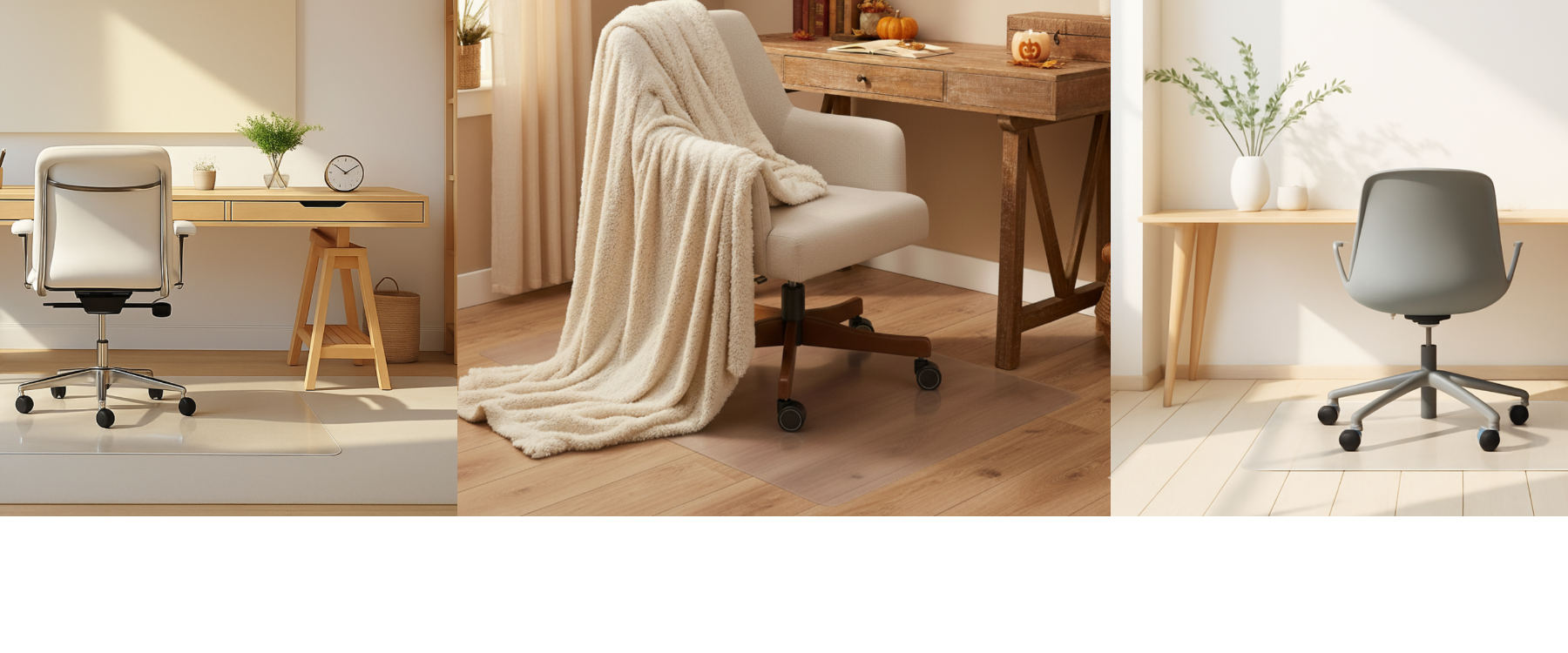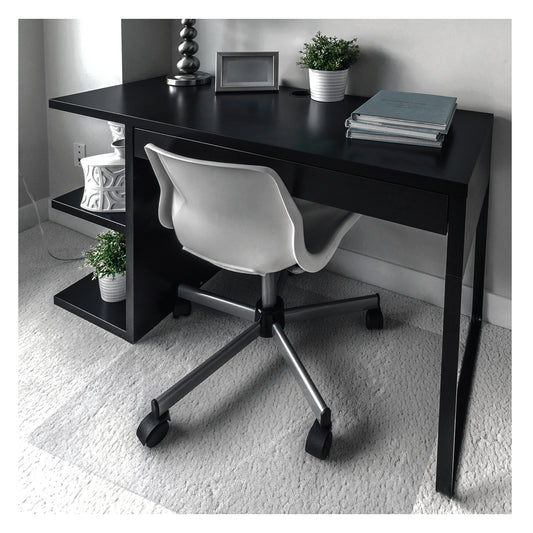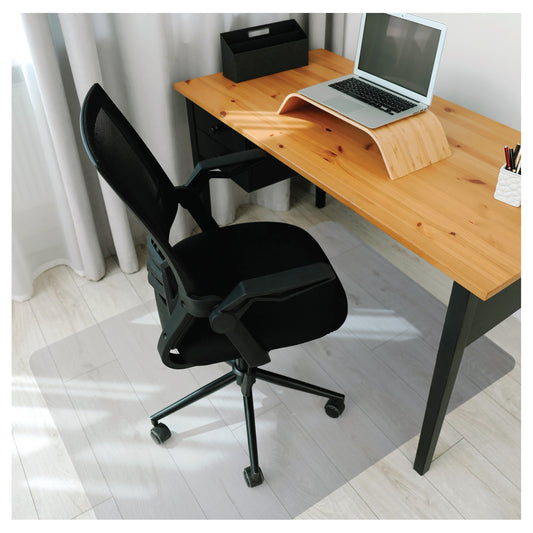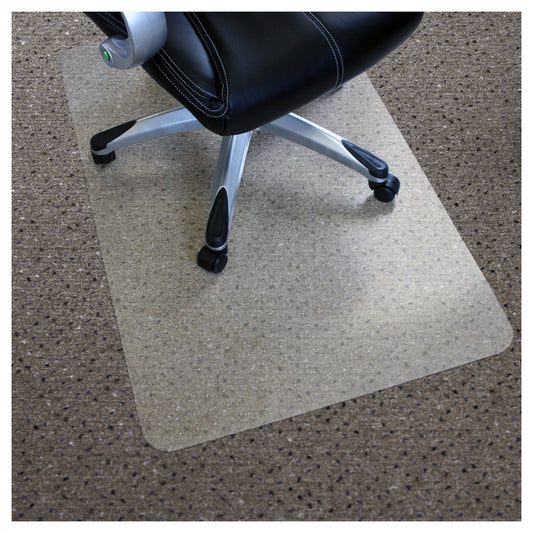Why Every Home Office Needs A Chair Mat!
Share
You love your home office setup – the fancy adjustable desk, an ergonomic chair and a perfectly placed laptop or monitor with your favourite mug within reach, providing the perfect productivity-boosting vibe. However, there is just one problem: those unsightly dents, scratches and wear marks appearing beneath your chair.
If this sounds familiar, you’re not alone.
Did you know? An office chair can travel up to 8 miles a year. The weight & movement of the chair and user gradually wears the floor surface causing irreversible damage.
Unfortunately, floor damage from rolling castor chairs is a common and sometimes very costly issue. Whether you’ve never heard of a chair mat before or are still on the fence about purchasing one, this blog will help explain why the damage happens and exactly how you can prevent it.


How Chairs Cause Floor Damage
Despite being great for mobility, rolling castor chairs are unfortunately terrible for many types of flooring. Here is why they wreak havoc:
· Friction - The plastic castor wheels on a rolling chair create constant abrasion on the hardwood or carpet, leading to scratches, scuffs, dents and dullness
· Castor Wheels - Many chairs come with either low quality castors or heavy metal castors, which aren’t designed for delicate surfaces
· Repetitive Motion - The frequent rolling back and forth in the same spot creates wear grooves and patterns
· Weight Distribution - Rolling chairs concentrate your body weight onto a small surface area. This frequent pressure is especially damaging to softer or thinner floor types
· Heat & Pressure - Temperature, humidity and constant friction caused by the pressure of the chair and user can also deform certain flooring types, especially in sun-exposed or poorly ventilated areas


Spotting the Signs Early
Catching the damage early can save you from future costly floor repairs as well as the stress of having to replace your flooring. Keep an eye out for the following:
· Flattened carpet fibres or deep mat impressions
· Light scratches or visible wheel tracks
· Tougher rolling - If your chair doesn’t easily glide like it used to, this could be your floor pushing back - literally!
· Discolouration from where your chair usually sits
A Solution That Actually Works
Use a chair mat:
One of the simplest fixes. They are affordable, widely available, designed specifically to protect your floor and if used correctly can last for many years.
They are cost effective. While the area of flooring being worn away may only be fairly small, the chances are the entire room will need re-flooring.
Provides ergonomic benefits. The constant pushing and pulling your chair on carpet can put strain on your body, whereas a chair mat will help reduce this resistance.
Available in PVC (for less frequent used office spaces) or Polycarbonate (perfect for longer office hours).
Pro Tip! Just make sure you match your chair mat to your flooring type:
§ Smooth backed for hard floors & vinyl
Upgrading your rolling chair’s castor wheels to softer ones could help temporarily, but the problem will return over time. A chair mat offers a lasting solution.
Protect Your Floors Whilst You Power Through Your Day
With just one simple upgrade, you can protect your floors and save yourself hundreds (or even thousands) in repair costs. A premium chair mat lets you hustle hard, stay focused and move freely, without ever having to worry about floor damage. Your office workspace (and your wallet) will thank you.





